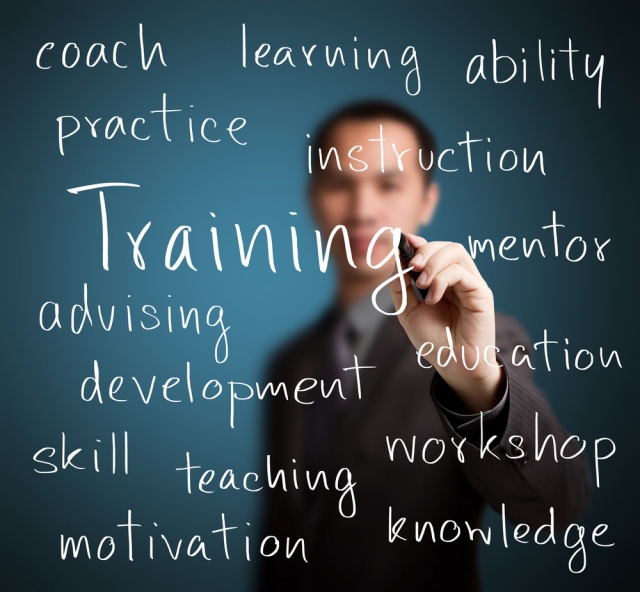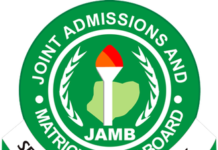
In the dynamic landscape of education, Nigeria stands at a critical juncture where the quest for quality education intersects with the imperative for sustainable development. Central to this pursuit is the pivotal role of teacher training and development. As the bedrock of educational advancement, effective teaching practices not only shape individual futures but also chart the course of national progress. This article embarks on a journey to explore the multifaceted dimensions of enhancing educational quality in Nigeria through the lens of comprehensive teacher training and development initiatives.
Through a meticulous examination of key variables, ranging from curriculum refinement to innovative pedagogical approaches, this article will unravel the intricacies of transforming Nigeria’s educational landscape. Readers will gain insights into the significance of teacher qualifications, the necessity of continuous professional development, and the nuanced art of classroom management. Furthermore, we delve into the transformative potential of technology in education and the indispensable role of community engagement. By the journey’s end, readers will be equipped with a profound understanding of how investing in teacher training and development can catalyze a renaissance in educational quality, thereby paving the way for a brighter future for Nigeria’s youth and society as a whole.
1) CURRICULUM DEVELOPMENT
Curriculum development lies at the heart of educational reform, serving as the blueprint for shaping students’ learning experiences. In Nigeria, initiatives aimed at curriculum enhancement have the potential to revolutionize teaching and learning outcomes across various subjects and grade levels. For instance, integrating interdisciplinary approaches into the curriculum can foster holistic understanding and critical thinking skills among students. By incorporating real-world examples and practical applications into lesson plans, educators can ignite students’ curiosity and enthusiasm for learning.
Moreover, aligning the curriculum with current global trends and local contexts ensures relevance and applicability, preparing students for the demands of the 21st-century workforce. For example, integrating digital literacy skills into the curriculum equips students with essential competencies for navigating an increasingly technology-driven world. Additionally, incorporating cultural and indigenous knowledge into the curriculum promotes cultural appreciation and identity formation among students.
Furthermore, flexibility within the curriculum allows for personalized learning experiences that cater to diverse learning styles and abilities. By offering elective courses or project-based learning opportunities, students can pursue their interests and develop essential skills tailored to their future aspirations. This adaptive approach to curriculum development ensures that education remains dynamic and responsive to the evolving needs of students and society.
2) PEDAGOGICAL METHODS
Pedagogical methods, the strategies and techniques employed by educators to facilitate learning, play a crucial role in shaping students’ educational experiences. In Nigeria, diversifying pedagogical approaches can enhance engagement, comprehension, and retention among learners.
One effective pedagogical method is inquiry-based learning, where students actively explore questions, problems, or scenarios to construct their understanding.
For instance, in a science class, instead of simply lecturing on photosynthesis, educators can facilitate a hands-on experiment where students observe plant growth under different conditions. This approach fosters curiosity, critical thinking, and problem-solving skills as students actively engage with the material.
Similarly, collaborative learning encourages students to work together in groups to achieve common learning goals. For example, in a history class, students can participate in group discussions or debates on historical events, analyzing multiple perspectives and synthesizing information. This collaborative approach promotes teamwork, communication skills, and a deeper understanding of complex topics through peer interaction and shared learning experiences.

Furthermore, incorporating experiential learning opportunities, such as field trips, simulations, or role-playing activities, can bring abstract concepts to life and make learning more tangible. For instance, a field trip to a local ecosystem can provide students with firsthand experiences to complement classroom instruction on environmental science concepts. By immersing students in real-world contexts, experiential learning enhances comprehension, retention, and application of knowledge.
Moreover, leveraging technology as a pedagogical tool can expand learning opportunities and cater to diverse learning styles. For example, interactive multimedia presentations, educational apps, or virtual reality simulations can make learning more interactive, engaging, and accessible to students. Integrating technology into pedagogy equips students with digital literacy skills and prepares them for the technology-driven demands of the modern world.

3) TEACHER QUALIFICATIONS
Teacher qualifications serve as a cornerstone of educational excellence, influencing the quality of instruction and student outcomes. In Nigeria, ensuring that educators possess the requisite knowledge, skills, and expertise is essential for delivering effective teaching and fostering student success. One aspect of teacher qualifications is academic credentials, including degrees, certifications, and subject-area expertise.
For instance, a mathematics teacher with a bachelor’s degree in mathematics and specialized training in pedagogy is better equipped to teach complex mathematical concepts effectively. Similarly, a language arts teacher with a degree in English literature and certification in teaching English as a second language can provide targeted instruction to support language acquisition and literacy development among students.
Moreover, ongoing professional development plays a crucial role in enhancing teacher qualifications and staying abreast of best practices in education. For example, participation in workshops, seminars, and professional learning communities allows educators to refine their instructional strategies, integrate new technologies, and address emerging challenges in education.
Additionally, pursuing advanced degrees or specialized certifications in areas such as special education, literacy instruction, or educational leadership can deepen educators’ subject matter expertise and pedagogical skills, ultimately benefiting their students.
Furthermore, teacher qualifications encompass not only academic preparation but also personal qualities and characteristics that contribute to effective teaching. For instance, qualities such as empathy, patience, enthusiasm, and cultural competency enable educators to connect with students, create inclusive learning environments, and support diverse learners’ needs. Additionally, strong communication skills, organizational abilities, and adaptability are essential for effectively conveying information, managing classroom dynamics, and responding to the evolving demands of teaching.
Overall, investing in teacher qualifications through rigorous academic preparation, ongoing professional development, and cultivation of personal qualities is vital for elevating the quality of education in Nigeria. By equipping educators with the knowledge, skills, and dispositions needed to excel in their roles, stakeholders can empower teachers to make a lasting impact on students’ lives and contribute to the nation’s educational advancement.

4) CONTINUOUS PROFESSIONAL DEVELOPMENT
Continuous professional development (CPD) is a cornerstone of effective teaching practice, providing educators with opportunities to refine their skills, expand their knowledge, and stay abreast of current trends and education research. In Nigeria, investing in CPD initiatives is essential for ensuring that teachers remain competent, motivated, and equipped to meet the evolving needs of students and society.
One example of CPD is participation in workshops and conferences focused on pedagogical innovations and best practices. For instance, attending a workshop on project-based learning or differentiated instruction can introduce educators to new instructional strategies and classroom management techniques that enhance student engagement and learning outcomes. Similarly, conferences featuring keynote speakers, panel discussions, and interactive sessions provide opportunities for professional networking, collaboration, and sharing of expertise among educators.
Furthermore, mentorship and coaching programs offer valuable support and guidance to educators as they navigate their teaching careers. For example, pairing novice teachers with experienced mentors who provide feedback, encouragement, and instructional support can accelerate professional growth and improve classroom practice. Likewise, instructional coaching initiatives, where coaches observe teachers in action, provide targeted feedback, and model effective teaching strategies, can promote reflective practice and continuous improvement among educators.
Additionally, online learning platforms and digital resources offer flexible and accessible CPD opportunities for educators. For instance, participating in webinars, completing online courses, or joining virtual professional learning communities enable educators to engage in self-directed learning, explore new topics, and exchange ideas with colleagues from diverse backgrounds. Moreover, digital repositories of educational resources, such as lesson plans, instructional videos, and research articles, empower educators to access up-to-date information and educational materials to enhance their teaching practice.
Overall, investing in continuous professional development is essential for fostering a culture of lifelong learning among educators in Nigeria. By providing diverse and accessible CPD opportunities, stakeholders can empower teachers to enhance their instructional effectiveness, promote student achievement, and contribute to the ongoing improvement of education in the country.
5) CLASSROOM MANAGEMENT TECHNIQUES
Effective classroom management is crucial for creating a conducive learning environment where students can engage, collaborate, and thrive academically. In Nigeria, employing a variety of classroom management techniques can help teachers establish routines, maintain order, and maximize instructional time.
One essential classroom management technique is establishing clear expectations and rules from the outset. For example, at the beginning of the school year, teachers can collaboratively develop classroom norms with students, outlining behavior expectations, consequences for misbehavior, and rewards for positive behavior. By involving students in this process, educators foster a sense of ownership and accountability, leading to a more cooperative and respectful classroom environment.
Additionally, proactive strategies such as structuring lessons with clear objectives, transitions, and routines help minimize disruptions and keep students focused on learning. For instance, using visual aids, timers, and signals to signal transitions between activities or indicate expected behaviors reinforces expectations and helps students understand what is required of them. Moreover, incorporating active learning strategies, such as group work, cooperative learning, and hands-on activities, can engage students and reduce off-task behavior.
Furthermore, positive reinforcement and praise are powerful tools for reinforcing desired behaviors and motivating students to meet expectations. For example, acknowledging students’ efforts, progress, and achievements through verbal praise, written feedback, or tangible rewards promotes a positive classroom climate and encourages students to stay on task and participate actively. Likewise, building positive relationships with students based on trust, respect, and empathy creates a supportive learning environment where students feel valued and motivated to succeed.
Moreover, effective classroom management involves strategies for addressing and de-escalating challenging behaviors when they arise. For instance, employing techniques such as redirection, proximity control, and calm verbal reminders can help diffuse potential conflicts and redirect students’ focus back to learning. Additionally, implementing restorative practices, such as restorative circles or peer mediation, encourages students to take responsibility for their actions, repair harm, and restore positive relationships within the classroom community.
Overall, by implementing a comprehensive approach to classroom management that emphasizes clear expectations, proactive strategies, positive reinforcement, and conflict resolution, teachers in Nigeria can create an environment conducive to learning and academic success for all students.
6) TECHNICAL INTEGRATION IN EDUCATION
Technological integration in education has the potential to revolutionize teaching and learning experiences, empowering educators to engage students, personalize instruction, and prepare them for the digital age. In Nigeria, leveraging technology in education opens doors to new opportunities for innovation, collaboration, and access to quality educational resources.
One example of technological integration is the use of interactive whiteboards in classrooms. These tools allow educators to deliver dynamic, multimedia-rich lessons that cater to diverse learning styles and preferences. For instance, a history teacher can use a smartboard to display maps, videos, and primary source documents, enabling students to visually explore historical events and analyze primary sources in real time. Similarly, interactive features such as touch-screen capabilities and digital annotation tools promote active engagement and participation among students.

Furthermore, educational software and digital learning platforms offer opportunities for personalized learning and assessment. For example, adaptive learning programs use algorithms to tailor instruction to students’ individual needs, strengths, and areas for improvement. By providing targeted feedback, adaptive learning platforms empower students to progress at their own pace and address learning gaps effectively. Similarly, digital assessment tools, such as online quizzes, interactive simulations, and virtual labs, enable educators to assess student understanding and monitor progress in real time, facilitating data-driven instructional decisions.
Moreover, access to digital resources and online educational content expands learning opportunities beyond the confines of the classroom. For instance, students can access e-books, educational videos, and multimedia resources to supplement their learning and explore topics of interest independently. Additionally, virtual field trips and online collaborations with experts or peers from around the world broaden students’ perspectives, foster global awareness, and promote digital citizenship skills.
Furthermore, integrating technology into teaching practice enhances educators’ professional development and collaboration. For example, educators can participate in online courses, webinars, and virtual conferences to enhance their technological skills, explore innovative teaching strategies, and connect with educators globally. Moreover, digital platforms for lesson planning, resource sharing, and collaboration enable educators to exchange ideas, collaborate on projects, and support each other’s professional growth.
Overall, by embracing technological integration in education, Nigeria can harness the transformative power of technology to enrich teaching and learning experiences, foster digital literacy skills, and prepare students for success in an increasingly interconnected and technologically driven world.
7) COMMUNITY INVOLVEMENT IN EDUCATION
Community involvement in education is essential for fostering collaboration, support, and investment in the educational process. In Nigeria, engaging communities in education initiatives strengthens the partnership between schools, families, and the broader community, ultimately enhancing student achievement and well-being.
One example of community involvement is parent and family engagement in schools. When parents are actively involved in their children’s education, students tend to have higher academic performance, better attendance, and improved behavior. For instance, schools can organize parent-teacher conferences, family literacy nights, or workshops on parenting skills and educational resources. By providing opportunities for parents to connect with educators, learn about their children’s progress, and get involved in school activities, schools can cultivate a sense of ownership and shared responsibility for student success within the community.
Moreover, community partnerships with local businesses, organizations, and civic groups offer valuable resources and support for schools. For example, businesses can sponsor educational programs, provide internships, or offer mentorship opportunities for students. Likewise, organizations such as libraries, museums, and community centers can collaborate with schools to host educational events, provide access to resources, and offer enrichment activities that complement classroom learning. By tapping into the expertise, resources, and networks of the community, schools can enrich the educational experiences of students and broaden their horizons beyond the classroom.
Furthermore, involving community members as volunteers or mentors can provide additional support and guidance for students. For example, retired professionals, community leaders, or college students can serve as tutors, mentors, or guest speakers, sharing their knowledge, skills, and experiences with students. Additionally, community service projects and service-learning initiatives enable students to apply classroom knowledge to real-world problems, engage with their communities, and develop a sense of civic responsibility and empathy.
Additionally, community involvement in education extends to advocacy and grassroots activism for educational equity and quality. For example, community members can participate in school board meetings, advocate for adequate funding and resources for schools, and mobilize support for policies and initiatives that benefit students and educators. By raising awareness about educational issues, amplifying diverse voices, and advocating for positive change, communities can play a crucial role in shaping the future of education in Nigeria.
Overall, community involvement in education is essential for creating a supportive and nurturing environment where all students can thrive. By fostering partnerships, leveraging resources, and empowering stakeholders to actively participate in the educational process, Nigeria can build stronger, more resilient communities and ensure a brighter future for generations to come.
In conclusion, the pursuit of educational excellence in Nigeria is a collective endeavor that requires the active involvement and commitment of stakeholders at all levels. By investing in teacher training and development, enhancing curriculum, leveraging technological innovation, and fostering community partnerships, Nigeria can unlock the full potential of its educational system to empower learners, drive societal progress, and shape a brighter future for generations to come.
As we embark on this journey toward educational transformation, let us embrace the power of collaboration, innovation, and inclusivity to create a learning ecosystem where every child has the opportunity to thrive. Together, we can build a future where education is not only a pathway to individual success but also a catalyst for societal development, equity, and prosperity. Let us seize this moment to invest in our most precious resource—our youth—and pave the way for a brighter tomorrow.




